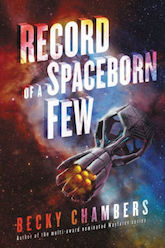If you have the chance to go listen to a talk by an astronaut, and if there’s a Q&A afterward, there are three questions that I can pretty much guarantee will come up: What do you eat in space? Where do you sleep? And of course, the old standby—how do you go to the bathroom? The age of the audience is irrelevant, as is the topic of the talk. You might have just sat through an hour on the politics of space policy, or on the future of planetary exploration, but regardless, inevitably, there will be some curious audience member for whom a Google search is not enough. They must know, human to human, how daily necessities are handled when the stability of a planet has been removed from the equation.
It’s an understandable line of questioning when you consider that you’ve probably conducted a similar one if you’ve ever traveled away from home. While the most adventurous may be down to crash anywhere (and may not even bother with figuring out where that anywhere is until they’ve arrived), it’s fair to say that the majority of us sort out our itinerary ahead of time. Soon as I’ve got tickets booked or a road trip planned, finding hotels or campgrounds is the next step, and naturally, I want to know what other people think about these possible temporary shelters. I look at reviews. I look at photos. If a friend has traveled to my destination before, I ask for recommendations. Once sleeping and hygiene are sorted, the next question is obvious. Are there restaurants nearby? What about grocery stores? Is breakfast included? I may not be heading into low-Earth orbit, but the checklist stands: Sleep. Food. Bathroom.
I was talking to a friend about the parallel between these two categories—astronaut queries and trip planning—when I amusedly realized that my first book addresses all of it right off the bat. The first thing Rosemary does when arriving aboard the Wayfarer in The Long Way to a Small, Angry Planet is find the bathroom. She’s shown her bedroom and given dinner in steady succession. I did it again in A Closed and Common Orbit, when Jane discovers the shuttle that will become her home, and immediately begins to sort out the holy trinity of needs before she can deal with her myriad other problems. I guess that somewhere in the back of my head, I had some questions for these astronauts.
It’s not like I did anything special there. Descriptions of food and lodgings are a standard part of fictional scaffolding. Try to imagine a book that didn’t provide those details. Weird, right? It’s like a sandwich without bread. And maybe this is just me, but a good description of a home-away-from-home will pull me into a book hook, line, and sinker. Take Lord of the Rings. Yes, epic battles, and yes, soulful characters, and yes, a beautiful narrative about good and evil and war and the common man. But when I think about what I loved about the experience of reading Lord of the Rings, rather than reflecting on the story as a whole, know what the first things are that pop up? The things that anchored themselves within me so clearly, I doubt I’ll ever forget them? The places they stopped to rest. Doesn’t matter if we’re talking about a night sleeping rough with Frodo and Sam, or a five-star weekend at Rivendell. Same with The Hobbit. I’m forever wishing I could run off to Beorn’s house. Or, to swing it back to science fiction, we could talk about the Enterprise-D, or Moya, or Galactica. Spaceships are cool from the outside, sure, and everybody loves a scene up on the bridge or down in the engines. But be honest: didn’t you lean just a little bit closer to the screen whenever we got a peek into someone’s room? I can’t do a show-of-hands in this format, but I’m willing to bet there’s a lot of you out there.
Buy the Book


Record of a Spaceborn Few
We like to know how people attend to their basics. It’s a ubiquitous human quality, and in storytelling, it serves an important purpose. That holy trinity I mentioned is a super effective tool for setting tone in a book, in a way that’s so elementary we don’t even consciously think about it while we’re using it (I don’t, at least). The Long Way was intended to make you feel safe, so home is established from the get-go. Closed and Common is more fraught, at first, so home begins as a shambles. My latest book, Record of a Spaceborn Few, is all about one specific home, so it’s unpacked slowly throughout. The reason this kind of set-dressing is so fundamental—whether I’m talking about my books or other books or the questions asked of astronauts—boils down to this:
The characters aren’t the only ones going on a journey. The audience is, too.
A story is a vacation, an adventure, an escape away from the everyday. So, just like you do anytime you head out on a trip, you want to know where you’ll be staying, what you’ll be eating, where to go when things get grubby. It doesn’t matter that your body isn’t going anywhere. Your mind is, and born as it is out of animal matter, an intrinsic need for physical respite is rooted deep in there. As a writer, you can mess with that to create whatever kind of emotional effect you want. The lack of a sense of home in a story is stressful for characters and reader alike. It summons a distant echo of a real-life lack of home, which we all know to be one of the worst indignities a human being can suffer. Characters who finally get to eat and sleep and clean up after a long slog—think again about those hobbits—is top-shelf catharsis. With anything else you put into a story, it’s impossible to know how readers will react, given that everybody is bringing their own unique life experience to the table. But this thing that I’m talking about here, that’s a relief that anyone can grok. It’s why astronauts will forever be answering those same three questions. Imagining life in space isn’t hard. You’ve just got to cover your creature comforts first.
Becky Chambers is the author of the science fiction novels The Long Way to a Small, Angry Planet, A Closed and Common Orbit, and Record of a Spaceborn Few. Her books have been nominated for the Hugo Award, the Arthur C. Clarke Award, and the Bailey’s Women’s Prize for Fiction, among others. She also writes essays and short stories, which can be found here and there around the internet. In addition to writing, Becky has a background in performing arts, and grew up in a family heavily involved in space science. She spends her free time playing video and tabletop games, keeping bees, and stomping around the woods. Having lived in Scotland and Iceland, she is currently back in her home state of California.










